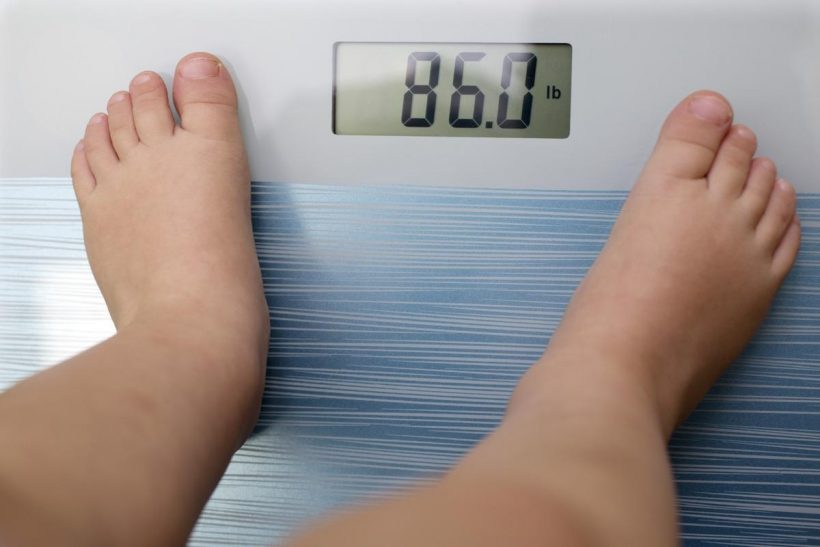Maternal adiposity or similar pregnancy-related issues have been believed to contribute to the neonate’s Body Mass Index (BMI) through intra-uterine effects during the periconceptional period and affect the child through adolescence. However, studies implementing different statistical models disagree with this claim. Studies involving negative paternal exposure control and those evaluating associations within sibling groups suggest that the association between childhood obesity/adiposity might be controlled by genetic or environmental factors, or both, shared within families, instead of just maternal adiposity.
 Study: Exploring the causal effect of maternal pregnancy adiposity on offspring adiposity: Mendelian randomisation using polygenic risk scores. Image Credit: off5173/Shutterstock
Study: Exploring the causal effect of maternal pregnancy adiposity on offspring adiposity: Mendelian randomisation using polygenic risk scores. Image Credit: off5173/Shutterstock
Mendelian randomization (MR) studies are another class of studies that use genetic variations as instrumental variables (IVs) for predicting the causal effects of a certain trait or exposure to certain conditions. Studies using MR to determine the effects of maternal BMI on fetal health provided no strong evidence for a causal effect. However, these studies used an offspring weighted allele score approach and simulations to avoid genetic inheritance bias. Moreover, there was no provision to adjust for paternal genetic variants, which further weakened their claim to reach an unbiased conclusion regarding this causal effect. Furthermore, the causal estimates from these studies were not precise.
In a recent study published in BMC Medicine, researchers modified the MR study methodologies by introducing maternal non-transmitted allele polygenic risk scores (PRS) as IVs in a single sample-based study design to ensure a bias-proof evaluation of the causal effect of maternal BMI on offspring adiposity.
About the study
In the current study, researchers collected data on children born in the 1990s, and those born in Bradford from two British population-based prospective birth cohorts, namely, the Avon Longitudinal Study of Parents and Children (ALSPAC) and the Born in Bradford (BiB), respectively. The ALSPAC cohort had recruited over 14,000 pregnant women in the early 1990s to make the database. The BiB, on the other hand, has health data of over 30,000 kids born in Bradford.
Researchers conducted longitudinal studies, along with one-sample MR using PRS calculated from maternal, non-transmitted alleles at between 29 and 80,939 single nucleotide polymorphisms (SNPs), to analyze the BMI of participants at their birth weight (BW), at one year, and then at four years of age. They associated the effects of maternal BMI on neonatal adiposity using multivariate regression analyses, adjusted for different confounding factors. They also calculated the BMI among the children belonging to the ALSPAC group at ages 10 and 15.
In confounder-adjusted MV regression models, as well as the single-variable, confounder-adjusted, MR model-based analysis, there was a similar, positive correlation between maternal BMI with all offspring outcomes.
In contrast, while assessing offspring adolescent adiposity outcomes beyond one year of age, using BMI and Fat Mass Index (FMI) calculations, the MR estimates were weaker than the MV estimates. While analyzing PRS with few SNPs, MR estimates were statistically consistent with the null hypothesis (maternal adiposity played an integral part in determining the child’s health at birth and during adolescence) but had wide confidence intervals.
In contrast, the largest PRS yielded MR estimates with narrower confidence intervals, providing strong evidence that the true causal effect on adolescent adiposity was significantly smaller than the MV estimates. These results emphasize the need to adjust residual confounding factors to determine associations between maternal BMI and offspring adolescent adiposity. Therefore, MR-based analysis without MV analysis did not accurately indicate the causal effect size.
Researchers found no strong evidence for a causal effect of maternal BMI on offspring adolescent adiposity, apart from those at birth. The prevalence of maternal obesity (defined by a BMI ≥ 30) was 5.5% in ALSPAC, 20.5% in BiB South Asians, and 26.0% among BiB White Europeans. Another striking feature of this study was the strong evidence in all three samples for associations between maternal BMI and other potential risk factors for the offspring outcomes, including parental occupation, educational attainment, maternal parity, and paternal BMI.
Implication
This study showed that maternal adiposity affected offspring adiposity to an extent only at birth. Although one cannot rule out a small to moderate causal effect of maternal adiposity in adolescence, this causal effect gradually diminished as the child grew up. There are other factors that affect childhood obesity that should be analyzed.
-
Bond, T. et al. (2022) "Exploring the causal effect of maternal pregnancy adiposity on offspring adiposity: Mendelian randomisation using polygenic risk scores", BMC Medicine, 20(1). doi: 10.1186/s12916-021-02216-w. https://bmcmedicine.biomedcentral.com/articles/10.1186/s12916-021-02216-w
Posted in: Medical Science News | Medical Research News | Disease/Infection News
Tags: Allele, Birth Weight, Body Mass Index, Childhood Obesity, Children, Genetic, Medicine, Nucleotide, Obesity, Pregnancy, Single Nucleotide Polymorphisms

Written by
Sreetama Dutt
Sreetama Dutt has completed her B.Tech. in Biotechnology from SRM University in Chennai, India and holds an M.Sc. in Medical Microbiology from the University of Manchester, UK. Initially decided upon building her career in laboratory-based research, medical writing and communications happened to catch her when she least expected it. Of course, nothing is a coincidence.
Source: Read Full Article






